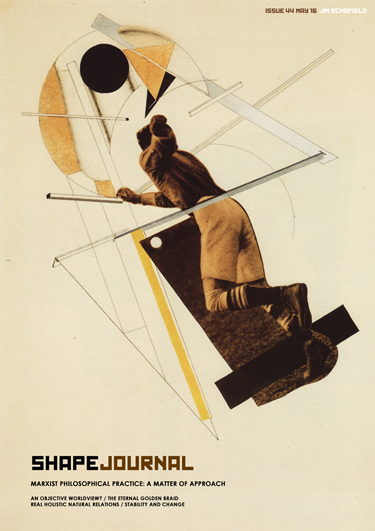 |
| Scultpure by Henry Moore - its beauty is nothing to do with symmetry or formal perfection |
As an artist (I am primarily a sculptor) as well as both a professional scientist, and a philosopher, I always justifiably jib at sweeping definitions of Beauty, from one or another supposedly fundamental stance! So, when today I was assaulted on YouTube by a series of such declarations, I was impelled to pen this essay.
The most glaringly false declarations, as you might have guessed, were inevitably about Mathematics!
Wilczek swoons at its towering and breath-taking "Beauty", while another is staggered by the importance of Number in the Universe.
But, it is also clear, that neither of these 'prophets' were in any way aware of the fundamental weakness at the very heart of that Mathematics, which makes it totally incapable of dealing with any qualitative developments whatsoever. For, its power resides solely in its artificial simplification of all things to reveal only their superficial Forms or Patterns.
Mathematics is the study of forever-fixed Pure Forms, and as such was, and is, a truly remarkable advance, but certainly NOT the Revealer of all, or even any, Causative Essence. The invention of this formal approach, by the Ancient Greeks, was indeed a major Revolution in intellectual studies: but it wasn't carried out by an omnipotent, all-knowing and all-seeing God - but by mere human beings.
Darwinian Evolution selects for Survival and effective Reproduction only - so our Hominid-Line knapped pieces of flint for literally millions of years, without any significant intellectual development occurring at all. For this 'intelligence' was not congenital, but certainly had-to-be both a solely socially-acquired, and passed-on ability.
Indeed, the undoubted proof is clearly evident, from the revealing studies of Palaeontologists, who also immediately recognised the tremendous significance of the Neolithic Revolution, when Mankind successively changed-over to staying-in-one-place with others of their kind to productively both Farm-the-Land, Domesticate Animals. and discuss with one another. Only then could increasing-social-interactions begin to develop in both the regular Exchanges of things, and revealing Discussions, delivering a consequent development of productive activities and crucially also both Language and indeed Thought itself!
Now, the above short diversion into Human Evolution was absolutely essential, as without it, the inevitably inaccurate initial misconceptions about the Nature of Mathematics would inevitably intervene to prevent any understanding of its accompanying significant weaknesses. So, unavoidably demolishing any promotion of it to a universally fundamental role in the Consciousness of Mankind!
The Ancient Greeks had achieved a remarkable thing conceptually, in their Intellectual Revolution - they invented a wholly new kind of Abstraction - with regard to Forms, that enabled the valid construction of the very first Intellectual Discipline in their History - namely Mathematics!
I call them "Simplifying Relatable Abstractions", and they were a remarkably empowering original invention! They stripped down certain formal conceptions to an absolute minimum content - indeed, so tiny were they, that they were useless in isolation - BUT, as connecting-enablers, they alone legitimately linked certain things together, delivering a sound means that could be legitimately repeated into delivering a substantial complex and coherent spatial Discipline.
But, there was a flaw!
All so-produced-things must be permanently fixed.
They could never change qualitatively into something else!
So, what had actually been inadvertently and unavoidably subscribed-to was the Principle of Plurality, and, most certainly, not everything was legitimately so permanently limited. But, abstract Form most certainly was!
Now, here beginneth the inevitable drift into significant Error, from this initial success. For, immediately, The Greeks, delighted with what they had been able to do with Form, exported the same sort of qualities into both Reasoning and a nascent Science, where they were wholly illegitimate as universal premises!
But, the disaster was, by no means immediately evident, particularly if those so-produced Disciplines were to be only used within naturally Stable and Unchanging Situations.
And also, crucially, in Science, investigators quickly learned how to both achieve-and-maintain such situations, for both relation extractions and also subsequent effective use of extracted eternal Natural Laws. While in Formal Logic, the Reasoning was limited to fixed concepts, which could suffice in most stable situations!
NOTE: But, almost immediately, Zeno of Elea had revealed the unavoidable falsities that emerged from Contradictory Fixed Concepts in his Paradoxes.
Now, as both a competant mathematician and a well-informed philosopher, I have developed these ideas, particularly with respect to the damaging Role of Pluralist Mathematics in Science, wherein I have established it as unavoidably both pluralistic and idealistic, and hence totally inadequate as any sort of assumed General Ground of Concrete Reality, i.e. in Science.
Indeed, all of its many extensions no longer exist within Concrete Reality at all, but are situated solely within Ideality - the realm of Pure Form alone.
So, when Wilczek and his like wax lyrical over the Beauty of Mathematics, he is actually describing situations in Form-Only Ideality!
The breath-taking intricacies and "beauties" of these investigators, are NOT about The Real at all, but, instead, only about the extensions of formal definitions into the infinite, but not concretely existing, features of Pure Form Alone within Ideality.
[It applauds the infinite extendibility and intricacy of Symmetry with Fixed Forms, and totally excludes the Real World Beauty of Creative Development entirely]
It just cannot be Science any longer: for it is, at best, a form of Art, based upon the Real, but artificially extended to extreme limits, outside of Reality, to display their Formal Beauty!
[Remember: Reality also contains properties, qualities and causalities, while Ideality contains only Form!]
But, why then is this unreal World indulged-in so extensively by scientists?
Having shot themselves in the foot via the Universal extension of Plurality to literally everything, they walled themselves off, permanently, from Developing Reality, and the Holistic and Dialectical means of dealing with it, so were forced to permanently give-up Understanding, for mere Prediction, and hence had to look elsewhere, NOT, it must be emphasized for Explanations, but instead, to seek only Descriptions-of-Forms that might possibly then be used as Disembodied Forms, enabling Prediction, without-Explanation or increased Understanding.
It is actually a retreat to an older pragmatism, disguised within sophisticated Abstraction!
NOTE: But, almost immediately, Zeno of Elea had revealed the unavoidable falsities that emerged from Contradictory Fixed Concepts in his Paradoxes.
Now, as both a competant mathematician and a well-informed philosopher, I have developed these ideas, particularly with respect to the damaging Role of Pluralist Mathematics in Science, wherein I have established it as unavoidably both pluralistic and idealistic, and hence totally inadequate as any sort of assumed General Ground of Concrete Reality, i.e. in Science.
Indeed, all of its many extensions no longer exist within Concrete Reality at all, but are situated solely within Ideality - the realm of Pure Form alone.
 |
| Jim Schofield's Theory of Abstraction |
The breath-taking intricacies and "beauties" of these investigators, are NOT about The Real at all, but, instead, only about the extensions of formal definitions into the infinite, but not concretely existing, features of Pure Form Alone within Ideality.
[It applauds the infinite extendibility and intricacy of Symmetry with Fixed Forms, and totally excludes the Real World Beauty of Creative Development entirely]
It just cannot be Science any longer: for it is, at best, a form of Art, based upon the Real, but artificially extended to extreme limits, outside of Reality, to display their Formal Beauty!
[Remember: Reality also contains properties, qualities and causalities, while Ideality contains only Form!]
But, why then is this unreal World indulged-in so extensively by scientists?
Having shot themselves in the foot via the Universal extension of Plurality to literally everything, they walled themselves off, permanently, from Developing Reality, and the Holistic and Dialectical means of dealing with it, so were forced to permanently give-up Understanding, for mere Prediction, and hence had to look elsewhere, NOT, it must be emphasized for Explanations, but instead, to seek only Descriptions-of-Forms that might possibly then be used as Disembodied Forms, enabling Prediction, without-Explanation or increased Understanding.
It is actually a retreat to an older pragmatism, disguised within sophisticated Abstraction!






























